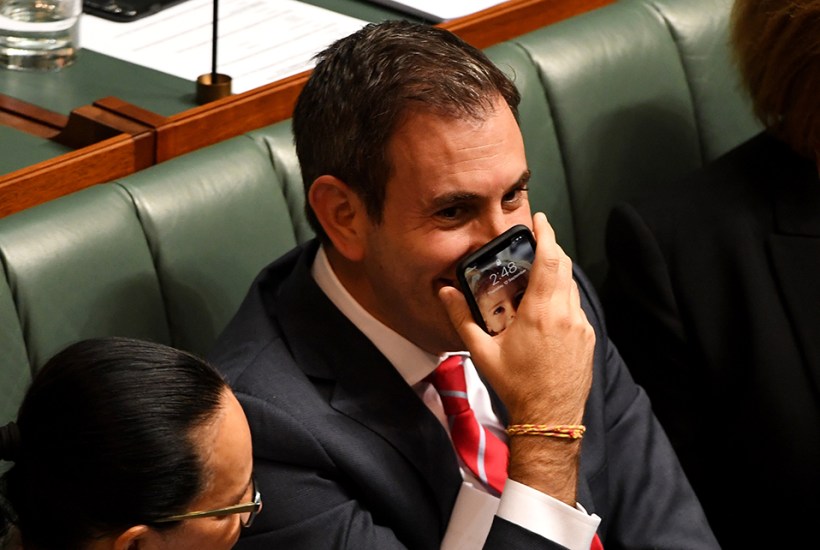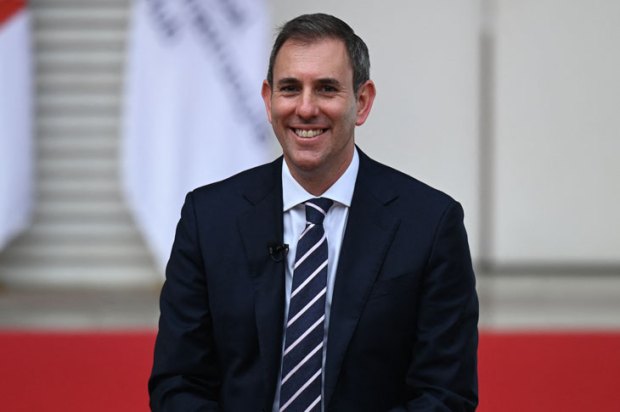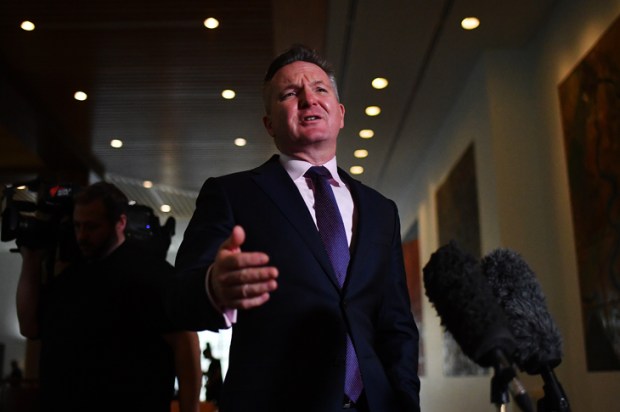Let’s face it, I don’t mind a bit of hyperbole – should that be hyperbowl? – from time to time. But Jimbo, our current federal Treasurer, has really hit new highs (or lows) when he started banging on about the ‘pilot light of purpose’.
Evidently, ‘if you don’t have that pilot light of purpose in you, then you’ve got no business being here in our line of work’. The trouble with trying to be Churchillian is that you really have to be Churchill to get away with it.
What even is the pilot light of purpose? It sounds like something out of a Monty Python script. Minion: So what are you up to today, Sir Charles? Chuck: Oh, just keeping the pilot light of purpose ignited so I can make the world a better place.
But it got better, Jimbo talked about dragging his arse through airports at 4.30 am, leaving the kids behind to keep the pilot light on high. Was the audience expected to clap at that point?
I guess all those other workers who are dragging their arses around at that time of the day – think night shift nurses and doctors, bakers, shift workers, more generally – don’t count because they are not carrying that all-important pilot light. Most of them aren’t even well-paid, which Jimbo is, for all that early morning arse-dragging, going about their purposeless existences.
One of the funniest aspects of Jimbo’s flowery endorsement of his own self-worth was the occasion – the release of the latest version of the Intergenerational Report, brought forward on his instruction for entirely political reasons. There is no doubt that this sixth IGR has hit new depths and that’s saying something. Gosh, the fifth IGR was handed down just two years ago, even though the legislation only requires these reports every five years.
These IGRs look into the crystal ball forty years hence and tell us how the economy will be travelling, what the debt and deficit positions will be and how living standards will have changed. If you are thinking that it sounds like a ropey exercise, you wouldn’t be wrong.
The fact that Jimbo thought the release of the IGR was an excuse for bragging underscores the point that he hasn’t really been paying attention. Previous IGRs have been laughably wrong, in part because it’s impossible to foresee government policy shifts.
Take the first IGR released in 2002. The prediction was that Australia’s population would reach 25 million by 2042, given that annual net migration was around 80,000. In point of fact, we hit 25 million in 2018, more than twenty years ahead of time because the floodgates had been opened for new migrants.
This time around, we are told that the population will reach 40.5 million in 2062-63, but this is almost completely dependent on the assumptions made about immigration. Note that with population growing at 1.1 per cent per year, Australia will have one of the highest rates of population growth of all advanced economies. I’m not sure that that’s something to brag about, Jimbo, given all the surveys point to opposition to high rates of migrant intake.
According to the sixth IGR, the five major spending areas likely to grow the strongest are: health, aged care, the NDIS, defence and interest payments on government debt. The government thinks that it can control the growth in spending on the NDIS, but this remains to be seen. Under one scenario, spending on the NDIS will outstrip spending on health.
For all the brief carry-on in the report about the heightened geo-political risk facing Australia, the report contains the assumption that spending on defence will rise from 2.0 per cent of GDP in the 2020s to 2.3 per cent in the early 2030s and stay at this proportion until 2062-63.
Given Jimbo’s promotion of his wellbeing framework – another example of the pilot light? – it’s a bit of a surprise that we wouldn’t really be ramping up defence spending over the whole period. Won’t Aukus require us to spend a whole lot more on defence? It’s also hard to think of a bigger downer to our wellbeing than being invaded.
But let me get to the weakest chapter of the report, the one entitled ‘Climate change and energy’. It’s a mixture of assertion and propaganda, providing very weak backing for the suite of misconceived current government policies. In particular, the analysis completely overlooks the costs and risks of the enforced transition away from fossil fuels, concentrating entirely on the assumed benefits, including lower energy prices as well as export opportunities.
Evidently, it is going to get too hot for workers to work, including those who exclusively work indoors. And tourists won’t want to come to Australia when the temperatures really start to climb. I’m not sure why – beaches, pools, air-conditioned hotels go well with hot weather – but, hey, it makes for a good Treasury doom loop.
And there is the decline in crop yields that are assumed in the face of rising temperatures although it is conceded that technological progress could interrupt this process. Indeed, if we look at what has happened to crop yields over the past several decades in the context of first-rate agronomic research, there is every reason to be optimistic on this score.
But again this doesn’t fit the Treasury mindset that we will all be completely ruined without immediate and effective global action to deal with the climate emergency, including on Australia’s part. (Hey, I think I could have written the chapter.)
But it’s OK because energy prices are going to fall with the rollout of renewable energy – pause for laughter here – and Australia is in the box-seat to be a renewable energy superpower, including via the construction of undersea cables, the export of processed critical minerals and green hydrogen – pause for hysterical laughter here.
Of course, because the world has signed up to the Paris climate agreement and China and India are making such a concerted effort to reduce their emissions – not – the demand for Australia’s thermal coal will collapse and will basically disappear in forty years’ time. Mind you, if the world is a bit slow on compliance, it could be the case that the exports of thermal coal only fall by 50 per cent.
Another scenario not mentioned in the chapter, obviously, is that our thermal coal exports hold up as China, India and other developing countries put the wellbeing of their citizens and the strength of their economies ahead of diplomatic nods to amorphous international climate agreements.
But it’s OK because Jimbo has the pilot light of purpose. We can all relax.
Got something to add? Join the discussion and comment below.
Get 10 issues for just $10
Subscribe to The Spectator Australia today for the next 10 magazine issues, plus full online access, for just $10.
You might disagree with half of it, but you’ll enjoy reading all of it. Try your first month for free, then just $2 a week for the remainder of your first year.














Comments
Don't miss out
Join the conversation with other Spectator Australia readers. Subscribe to leave a comment.
SUBSCRIBEAlready a subscriber? Log in